#early hitchcock
Explore tagged Tumblr posts
Text

Young and Innocent (1937) is my favourite of the early British Hitchcocks. Throughout the movie, Erica is saving Robert from police capture but then near the end these roles are reversed with him saving her by grabbing hold of her hand when she's about to fall into an abyss.
That symmetry and also that specific action are reminiscent of Ico (PS2), though I'd be very surprised if Fumito Ueda ever saw this movie in his formative years.
#young and innocent#young and innocent 1937#the girl was young#alfred hitchcock#early hitchcock#ico#team ico#fumito ueda#ico and yorda#gif
2 notes
·
View notes
Text










Nova Pilbeam in Young and Innocent (1937).
Nova Pilbeam looks a bit like Emma Watson and her plummy voice is just wonderful.
#nova pilbeam#young and innocent#young and innocent 1937#the girl was young#derrick de marney#alfred hitchcock#early hitchcock#emma watson lookalike#gif
0 notes
Text
So last summer, when listening to the in9 pods & commentaries, I twice picked Reece up on mentioning something about Hitchcock and the "bomb under the table", but I never looked up what that was.
Last week, I watched BECOMING HITCHCOCK: THE LEGACY OF BLACKMAIL where, at one point, the "bomb under the table" was mentioned, and I finally found out what it was (and later realized this was actually a very famous quote...I'm ashamed not to have known it despite being a Hitchcock fan!!):
youtube
The last bit of that video is interesting and wasn't something I found when initially googling the "bomb theory". Reece & Steve have talked about writing moments of tension and then letting the audience off the hook with a laugh - I believe this has been mentioned in the TLOG commentaries as well (one of the live shows?).
I racked my brain for quite some time on just where this was mentioned, and it finally clicked for me today that it was in the "Private View" commentary and the "Misdirection" BBC Sounds pod. (ofc it was when discussing the murder-mystery eps!!!)
Attempted to transcribe the commentary & pod because I don't want to forget this again (forgive the terrible punctuation):
PRIVATE VIEW commentary @ 20:27
Steve: We got to this point and we thought, "Right, rather than leave the unmasking of the killer right to the very end, which would be the obvious way of doing a twist ending, we'll reveal now", or coming up – Reece: Well, then it takes the heat off it being a massive reveal at the end, because if you're getting it, it's like, well, don't worry, we want you to know at this point. Steve: Well, the fewer people that are alive, the more you're likely to guess. Reece: Yes, and also it's nice that then the tables are turned as far as the audience knowing who the killer is, but the people that are innocent don't, and then you're ahead of them. Steve: Exactly, you can enjoy that. Reece: It's like the Hitchcock thing of telling people that there's a bomb under the table.
MISDIRECTION – Inside Inside No. 9 pod @ 01:32
Steve: So, this is the fourth episode, and it centers on magic, and it's fair to say you love magic. Reece: Yes, magic. Well, we always wanted to do one sort of in that world – or I did – but I think, actually, thinking about it, one of the things that got us through it was the idea of doing a Columbo episode, wasn't it? It was a murder where you knew the person had done it and it was how they got caught. That was an appealing set up. Steve: Very often with these episodes, we're kind of holding something back, and it was great, with this one, to begin with a big action set piece and kill off a character who you may have thought could've been going on to the end. Reece: Yes, and I remember in the edit, this was long, wasn't it? It was quite long, and there was suddenly a version where we thought you could cut the beginning off and start with Neville successful, then halfway through let the penny drop that he'd done this thing. (Steve: What, so cut me out of it entirely? Reece: No, you'd have been back in it as a reveal – Steve: What, as a flashback? Reece: – as to what happened. Well yeah, then you'd have been in a flashback rather than a – Steve: Mm, I wasn't party to that decision. Reece: No, no, you were.) Obviously, it was better the way it was because then you were watching, like the Hitchcock thing, isn't it, of the bomb under the table, where he says there's two people talking about baseball, and they're talking about baseball and then the whole thing blows up because there was a bomb under the table; but then if you show the bomb under the table and then see them talking about baseball – Steve: You've got the tension. Reece: – you've got the tension, and that's sort of what we went with.
#in9#inside no 9#inside no. 9#private view#reece shearsmith#steve pemberton#hitchcock#alfred hitchcock#i legit went back to the Ken Plume pods thinking that's where r had mentioned it but it wasn't#(not that that was even a chore since those interviews are great to listen to)#suddenly figured out early this morning that the Private View commentary must've been it (and it was!)#then when Misdirection was on the bracket poll i was discussing the ep with my friend#and suddenly thought oh maybe the pod is where the theory was mentioned in more detail (and it was!!!!)#anyway idk where i'm going with this post and if it's of any interest to anyone but myself lmao#i think it's bc i've been watching a lot of Hitchcock lately so i'm naturally linking this to in9 and the way the show is written#vagueeyes.txt
12 notes
·
View notes
Text
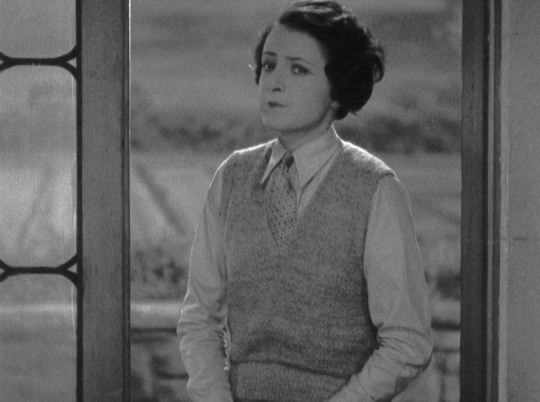









Jill Esmond in The Skin Game (1931)
#a very unexciting early talkie from hitchcock#not the best. not the worst. just eh#jill esmond#the skin game#1931#alfred hitchcock#30s movies#1930s film#b&w#30s fashion#dog#helen haye#c.v. france#cv france#actor posts
2 notes
·
View notes
Text
watching marnie today! can see already that it's another hitchcock mommy issues movie, which i don't mind, always makes it psychologically interesting despite the concept being overdone
#ive noticed that it's hitchcock's later movies that take on this mommy issues thing#notorious is an exception i think- early mommy issues hitchcock
3 notes
·
View notes
Text

Tippi Hedren in The Birds🍂
Via @thereal60sbazaar on Instagram🍁
2 notes
·
View notes
Text
al things considered — when i post my masterpiece #1197

first posted in facebook june 3, 2023
peter blume -- "winter" (1964)
"... a new day was starting, the things of the garden were not concerned with our troubles. a blackbird ran across the rose-garden to the lawns in swift, short rushes, stopping now and again to stab at the earth with his yellow beak. a thrush, too, went about his business, and two stout, little wagtails, following one another, and a little cluster of twittering sparrows. a gull poised himself high in the air, silent and alone, and then spread his wings wide and swooped beyond the lawns to the woods" ... daphne du maurier
"hell, maybe we're all getting a little carried away with this. admittedly a few birds did act strange, but that's no reason to ..." ... sebastian sholes (fisherman in diner)
"i keep telling you, this isn't 'a few birds'! these are gulls, crows, swifts...!" ... melanie daniels
"i have never known birds of different species to flock together. the very concept is unimaginable. why, if that happened, we wouldn't stand a chance! wow could we possibly hope to fight them?" ... mrs. bundy (elderly ornithologist)
"it could be the most terrifying picture i ever made" ... alfred hitchcock
"the early worm skips the birds down in florida" ... al janik
#peter blume#winter#the birds#daphne du maurier#a few birds#birds of different species#flock together#terrifying#alfred hitchcock#the early worm#melanie daniels#ornithologist#florida#al things considered
4 notes
·
View notes
Text
This is some great counterpoint by @fuckyeahisawthat, and is pretty accurate by my understanding. But it's not the whole story, and I wanted to add some nuance:
Visuality has always been important in television, from its inception. Directors, cinematographers, designers (of sets, costumes, etc.), actors, and producers all had a lot of creative ambition, and there was a widespread desire to outdo the competition, bring new innovations to the medium, and "make a name for oneself."
The people who produced TV's nonfiction stable of programming—including news, sports and athletic matches, and features (e.g. long-form interviews, educational content, documentaries and travelogues, etc.)—had a vested interest in the value and potential of their photography, visual demonstrations, onscreen diagrams, and so forth. Generally speaking, these aspects of nonfiction programming would have been deleterious for a viewer to miss out on. Not to say people didn't miss out (e.g. while making dinner), but they often did so at a penalty to themselves.
The people who produced fiction / entertainment programming for TV—e.g. dramas, sitcoms, horror and suspense programs, kids' shows, music programs, and theatrical performances of plays, music, etc. (some of which strain the container label of "fiction" and would better be called "cultural," but I'm keeping it simple)—also had a vested interested in making the most out of the new medium. Exciting, action-packed visuals helped hook kids. Thoughtful, evocative visuals around something like a symphony orchestra performance helped immerse viewers at home into the experience of actually being present in the auditorium—an "evening out" from the comforts of home, and at a much lower price. Shows like The Twilight Zone made clever use of shadows and abstractions to build horror and unease. And, additionally, "radio" wasn't the only progenitor of television: Other cultural sources were progenitive of it too, like stage theater, which had a lot of physicality that you had to see to fully appreciate, and vaudeville, which had a great deal of visuality in its humor and storytelling, and these progenitive sources were also reflected, where applicable, alongside the influences of radio when it came to their respective TV adaptations—and this was true right from the beginning.
Generally speaking, visual effects, visual gags, visual bits, and visual storytelling itself were all of great importance in fleshing out TV shows and specials. Imagine Lucy and Ethel on the chocolate candy conveyor belt line, or the gambler trying to light his lighter ten times in a row in Alfred Hitchcock Presents. One simply cannot miss elements like this and still claim that they have absorbed the storytelling.
So it's not quite right to say that early TV was designed to not have to be closely watched. Rather, the way I would put it is that early TV was (mostly) designed to be as accessible as possible to the casual viewer, i.e. the listener who might have over things going on at the same time—because why leave profitable audiences out of your televisual revolution if you can help it, and why make the switch from radio to television any harder than it needs to be? But, that said, television absolutely was designed with a visually attentive audience in mind, for the most part, right from the start. Hollywood knew what it had on its hands with the advent of television. They knew the visual medium was important, that it would fundamentally transcend what radio had been able to do. They were pushing hard into that exciting unknown. And let's also recall that television was a novelty in its early years and very exciting on a cultural level. People would go over to each other's houses to watch new episodes of their favorite shows, or watch the fights together, etc. Hollywood knew this too, and producers and directors were eager to take advantage of this enthusiasm to the fullest.
I said "for the most part" because there were exceptions, naturally. Some television really was produced to be primarily auditory. One of the biggest categories for this would have been "women's" daytime programming like the soap opera—which was designed with hardworking housewives in mind and in any case didn't have the time or budget for much visuality in its production. What visuality did exist was often there solely to entertain audiences with aspirational clothes, housewares, and pictures of idyllic midcentury life, and, complementarily, to likewise entertain them with the scandalousness of scoundrels. Another category in this vein would have been popular sporting events, which were very well-narrated on TV, with all the same care and attention to detail utilized by radio announcers, so that if a viewer at home wasn't able to be fully visually attentive they could still listen in and get a good sense of the action, and perhaps they could pay closer attention to the TV screen at moments when the action was especially interesting. And, as was mentioned, a third category of "audio-first" television would have been those TV shows that did hop over from radio. They carried the trappings of radio with them because they had formulas that worked and loyal audiences. These productions often had very little visuality except as set dressing. The 1950s incarnation of Dragnet is a good example of this that I can attest to. TV Dragnet was the televised version of its immediate predecessor of the same name on radio. (But consider that the times changed rapidly, and, just ten years later, the more well-known 1960s incarnation of Dragnet was already something of an anachronism in its terse speaking styles and punchy pacing (very radio-inspired). By the time color TV began taking over at the end of the 1960s, Hollywood was already mining deep into the world of visual potential with the television medium, and "make it so that you don't have to actually watch it" would have assumed an increasingly niche meaning, referring less so to the ethos of the entire production and more so to the aesthetic principle of not overcomplicating or overcluttering that still-tiny boob tube. Or at least that's my interpretation. I'm not actually a part of the television industry, and never was, so what do I know?)
But, to get back to the thread of my plot, even at the beginning of television, categories like the above were the exceptions. Visuality was always important. If that doesn't appear obvious to modern eyes, that's probably because of some conventions of the medium interfering:
The key problems with visuality in television took the form of two main challenges: small visual fidelity and small budgets (at least compared to motion pictures). The budgetary issue speaks for itself, so I won't dwell on it. But as for visual fidelity:
Early television had very little visual fidelity to play with—certainly nothing in comparison to the quality of the pictures that people would still regularly go and watch at the movie theater. Pictures were small, and many people's antenna reception was less than flawless to begin with. So the visuality that did exist on television had to be some combination of simple, bold, and familiar.
The boldness component had more to do with taking advantage of the limitations of the medium to innovate new forms of creativity that looked compelling in the medium. (I mentioned The Twilight Zone, for example, whose visual mood-building at times is vaguely reminiscent to me of very early film from decades earlier, when costumes and set designs often looked like they were out of paintings or dreams—the pioneers of motion pictures having likewise made the most of the severe limitations of their nascent medium to create astonishing visual ideas.) Meanwhile, it is the simplicity and familiarity components which allowed for a lot of television programming to be watched without actually being closely watched per se.
This simplicity interacted with the storytelling in some interesting ways. It's one of the lesser reasons that early television was so cautious, formulaic, and "staid" by modern standards in its camerawork. Interior establishing shots would usually showcase the visual forms that would become relevant in the course of a scene or program. Camera shots would linger for longer so that viewers had time to make sense of what they were looking at. (A sadly neglected bit of craftwork nowadays, as a lot of modern storytelling doesn't actually engage with its own elaborately-constructed environments, and doesn't really care about the realism or realness of those environments.) Similarly, upcoming visual effects / gags / etc. would often be lampshaded in the narration or dialogue ahead of time, and the rudiments of gags introduced or explained, so that audiences wouldn't be forced to identify objects and actions on the screen strictly through visual means. Moreover, in scripted programming it was commonplace for the plot and the action to run heavily through the dialogue, as was mentioned in the previous post (and also through the sound and foley work, which was often done very thoughtfully). And, thus, through simplicity there was a certain amount of redundancy and accessibility built in so that it was possible for audiences to make sense of what was happening, to an extent, without actually seeing it. Some television programs were more forgiving about this, having simpler set designs, less visual storytelling, fewer visual effects / gags / etc., and simpler soundscapes than other programs. Even in prime-time programming this wasn't rare; you could pick a scene at random from something like, say, The Donna Reed Show, and probably still be okay in following the action even if you didn't look at it whatsoever. But such programming made these concessions at its own expense, and most of the classics, which have stood the test of time, do not fare as well under such lack of scrutiny by the viewer: You just can't ignore the visual dimension of I Love Lucy or The Dick van Dyke Show, etc., and not be seriously penalized for it.
But even shows like those, which weren't as simple in their visualities as their less-illustrious contemporaries, were more forgiving than a lot of modern television programming. How? That's where the familiarity component comes in. Shows like these, and a great deal of television programming in general, benefitted from being familiar to audiences. Recurring shows such as sitcoms and dramas, with familiar characters and almost entirely familiar scene locations, could be watched less closely and still appreciated uncommonly well due to the audience's prior knowledge of the functionality of these familiar stage sets and the visual performance styles of the actors. Even beyond individual productions, this helped to crystallize entire genres of television, with audiences building inferred expectations about what a given type of show was supposed to entail. And this adherence to formulas and tropes was done faithfully by Hollywood, making it much easier for viewers to look away from the screen for a bit and return without getting totally lost.
But by the time I came on the scene, in the '80s and '90s, watching a TV show without watching it wasn't really a thing for the most part. You could do it with some niche programming—I used to like to run The Weather Channel in the background sometimes—but, for the most part, if you tried to watch, say, The Simpsons, or Home Improvement, or Yan Can Cook without looking at the screen...you were missing out on a lot, to the point where you would struggle to follow what was actually happening and/or fully appreciate the humor and storytelling.
That's more or less everything that I wanted to say. Television was visually ambitious and intrinsically visual right from the beginning, despite also being highly accessible to listeners and perhaps "modest" to our modern eyes.
It's fascinating how some of these conventions of listenability survived for so long, with the previous poster mentioning that the associated principles were still being taught at least as recently as the beginning of this century. It's definitely true that, specific to this century, a lot of high-end television programming has moved away from its television roots and toward the paradigm of motion pictures. That was not a thing in the 1990s; you can basically track it back to when widescreen TVs took over 4:3 sets as the default.
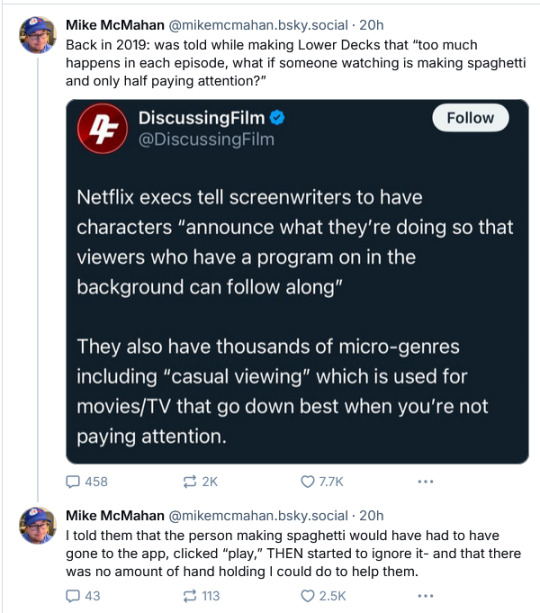
#Early television#History of television#Philosophy of Television#Classic TV#I Love Lucy#The Twilight Zone#Alfred Hitchcock Presents#The Donna Reed Show#(I wonder how many people in the entire remaining future of humankind are ever going to search tags for The Donna Reed Show.)#Television production#Midcentury culture#Television industry
62K notes
·
View notes
Text
Espionage and Suspense: Review of The 39 Steps (1935)
Espionage and Suspense: Review of The 39 Steps (1935)
Synopsis- Richard Hannay, an innocent man, becomes entangled in a dangerous espionage plot after a woman’s murder. On the run, he must uncover the secret of “The 39 Steps” to clear his name. Director- Alfred Hitchcock Cast- Robert Donat, Madeleine Carroll, John Dwyer Genre- Thriller | Mystery Released- 1935 ⭐⭐⭐⭐ Rating: 3.5 out of 5. Alfred Hitchcock’s The 39 Steps is a brisk, entertaining…
#1930s Cinema#Alfred Hitchcock#★★★#★★★★#black and white cinema#cinema#Early Cinema#Featured#film review#Film Reviews#John Dwyer#Madeleine Carroll#movie review#Mystery#Robert Donat#Thriller
0 notes
Text
ahem
AHAHSHEHEHHAAAAAAAA!!!!!!!!!!!! AHHHHHHHHHHHHHH!!!!!!!!!!!!!!!!! AHHHHHHHAHAHHAHAHHHHHHHHHHHHHHHHH AHHHHHHHHH!!!!!!!!!!!!! AHAHHHHHHHHHHHHHHHHHHHHHHHHHHHHHHHHHHH!!!!!!!!!!!!!!!!!!!!!!!!!!! AAAAAAAAAAAAAHHHHHHHHHHHHHHHHHHHHHHHHHHHHHHHHHHHHHHHHH!!!!!!!!!!!!!!!!!!!!!!!!!!!!!!!!!!!!!!!!!!!!!!! NOOOOO OH NO AHHHHHHHHHHH AHHHHHHHHHHHHHHHHHHHHHHHHH
#deertalking#apartment walls too thin. screaming via tumblr to avoid noise complaint.#my brain is so fucking annoying like bro stfu!!!!!!!!! read normal babe!!!! write fast and good !!!!!!!!!!!!#honest to god ahhhhhh Ahagahhhh literally AHHHHHHHHHHHHH#i hate mental health and medication and reading and languages and alfred hitchcock and being awake and sleeping. thank u and goodnite#just kidding im not done.#literally genuinely fuck medication and genetics and having a brain and time and citation styles and classes and lyrics and glass#cooking. uhhhhhh fucking uhhhhhhhhhh teeth. uhhh money. phone calls. the subway and basically everybody on it. men that yell at me#music theory. eye contact. ugly fonts. cloud syncing. old ass newspapers that are shittily scanned#thumbtacks but the flat ones and also texting and maintaining relationships and parents and deadlines etc etc etc i can go on. i can#the early 20s are genuinely the foulest bitches it seems..#im gonna shave my head or smth istg#this is IMPOSSIBLEEE
1 note
·
View note
Text
Scary Christmas
okay scary christmas. i wanna get on this early because I'll be disappointed if Scary Christmas happens but it's just Christmas But Make It Children's Horror Game and/or The Nightmare Before Christmas. Warning: I'm literally making up all of this as I go along.
I respect the scary but as a scaredy-cat, I would rather not go full horror. Oh yeah, and I forgot to mention, we're throwing the Christmas part out the door. Vintage goth might be a good starting place for the aesthetic? Blood accents encouraged. Potential Scary Christmas colors:

idk i'm not an artist...

I'm imaging making old-web style "happy scary christmas" glitter graphics...
Scary Christmas iconography: spiderwebs are a good place to start. But more cobweb-y than spider-y. A line with a moon on top and a sun on the bottom, to represent the respective seasons of the Northern and Southern Hemispheres. The painting The Scream. Snowflakes? (Sorry Southern Hemisphere) My first concept art looks too much like Halloween.
Scary Christmas concept art:


Scary Christmas greetings: "Happy Scary Christmas!" "We're almost through January!" "May you face February unafraid." just "Face February unafraid!" in the cadence of an NPC. "Boo!"
Scary Christmas activities:
watching horror movies (with friends)
but if, like me, you are afraid of horror movies, then watching comedic kid's Halloween movies (The Nightmare Before Christmas included! I just want this to be MORE than that) or black and white films, particularly Alfred Hitchcock films, are encouraged substitutes.
gather around and sing SCARY songs or recite SCARY chants
or the Dune litany against fear
set a goal of doing something that makes you scared.
almost all holidays have traditional food so uh... okay apparently January is National Soup Month?? idk for which nation but soup it is. tumblr users love soup.
if there is no soup, there still should be a main dish in a bowl.
Scary Christmas goals are often (sorry my brain thinks it'd be really fun to write this like it's real but I don't want to confuse people) to live more authentically. Traditional Scary Christmas stories remind the listener that as scary as opening up as your true self is, the joy it brings is worth it. (transition. Scary Christmas is pro-trans.)
The meaning of Scary Christmas: Scary Christmas is a holiday that recognizes how scary life is. It is a day to acknowledge fear so we don't let it control the rest of our year. Celebrants are encouraged to share their seemingly-silly fears and realize they're not alone in them.
Scary Christmas recognizes that facing our fears helps us grow. On Scary Christmas, everyone is encouraged to take one step out of their comfort zone, whether it's trying a scary new food, watching a scary movie, or talking to a person (scary) -- but no one is forced to, because the Scary Christmas ideology also acknowledges that growth best happens under support.
Scary Christmas celebrates uniqueness and deviance. Catchphrase: stay scary, not scared!
Looking forward to celebrating Scary Christmas with you all on January 25th!
#I said this#scary christmas#tumblr holidays#tumblr calendar#I knew a guy once who invented a religion called Boat Mormonism which had nothing to do with Mormonism at all (but did involve boats)#so i took inspiration with that name framework in coming up with this#you guys can run a referendum on scary christmas colors or something ikd i feel like it needs some because celebrating on tumblr will mostl#be visual but i'm not good at picking colors. quite obviously
239 notes
·
View notes
Photo
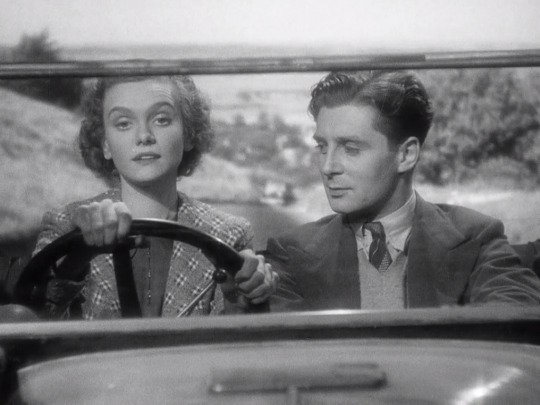

Nova Pilbeam and Derrick de Marney in Young and Innocent (1937).
She looks a bit like Emma Watson, don’t you think?
This is a really fun movie that’s basically a very early action movie. Hitchcock was such a pioneer and his movies don't feel dated like others of the same era.
#nova pilbeam#actress#young and innocent#the girl was young#derrick de marney#alfred hitchcock#hitchcock#early hitchcock#couple on the run#eyebrows on fleek#looks like emma watson#emma watson
1 note
·
View note
Text
Claude Rains Vs. William Hopper


Propaganda
Claude Rains - (Alfred Hitchcock Presents, Wagon Train, Rawhide) - "The reason I got into Old Hollywood and started studying theatre and film! He's such a little cutie as well as a smoking hot, velvet voiced morsel of evil - he's that good and can play both so easily!..." text propaganda continued below the cut.
William Hopper - (Perry Mason) - "Why do I love him? The list abounds..." text propaganda continued below the cut.
Master Poll List | How to submit propaganda | What is vintage? (FAQ)
Additional propaganda below the cut
Claude Rains:

While he might be more famous for his movie roles(like Casablanca, The Invisible Man, Lawrence of Arabia, Now, Voyager, and Mr. Skeffington to name a few!), he was also a television star in his own right! He had lots of guest spots on various shows but in the tv-realm, he's probably the most well known for his work for "Alfred Hitchcock Presents" and was a frequent collaborator with Hitch himself, having the spotlight for five episodes! My favorite tv performance of his was playing Father Amion in the episode "The Horseplayer", where he plays the kindest priest who gets taken for a ride and it's so heartbreaking to see him in tears where he confesses that it's his fault the church's funds were used for less than better means (but it all works out in the end!). It's such an honest performance and it's a refreshing change from all his evil villians (but we love them anyway!) he'd done in the past. Another favorite performance of mine is his performance as Leonard Eldridge in the episode "The Door Without a Key", a seemingly amnesiac old man who makes a bond with a lost boy in a police station. They're adorable together and I found myself tearing up a little when they both confess how lonely they are in the world.



youtube
William Hopper -

William Hopper was a tall guy (6'3"!) but such a gentle sweetheart. He was in acting for the majority of his life (barring serving as a frogman in WWII and working as a car salesman post-war for a few years), but he really stepped into his own with his role as Private Detective Paul Drake in the Perry Mason TV Series from 1957-1966. William Hopper actually didn't really love the Hollywood scene, mostly because he grew up with it since he was a child. His mother was Hedda Hopper and she really wanted him to be an actor and became quite overbearing about it, but he was more of an introverted soul. He first started out in films in his early 20s, but William Hopper always felt like people were giving him jobs because of his mother's influence with her gossip column. HOWEVER, after the war and after William Hopper sold cars for a few years, he came back to acting but he said he was only going to come back if 1) he did it his way/gave himself to it and 2) his mother stayed out of his career so he could make it on his own. Those two things happened, and William Hopper made his own way.

His big major starring role in a television series was, without a doubt, Perry Mason. He was Private Detective Paul Drake. To take on that role, William Hopper personally went out and made friends with Private Detectives to try to bring their experiences to his role. William Hopper also was credited by Alan Alda for showing the acting world how to shine as an actor without demanding the spotlight all the time. Alda said: “William Hopper’s ability to be present in a scene without demanding the spotlight is an art form in itself. He showed us that one can shine without the blinding glare.” Which, I think, really was a big testament to William Hopper playing a private detective--- he was always commanding the series and making the moves and observations that led to finding the guilty person in a criminal case, but he was always doing so in a way that was true to the work of a private detective: hiding and working in plain sight.


Other fun facts about William Hopper that make him so lovable: he LOVED the beach and loved fishing and swimming. When he wasn't filming for Perry Mason (they would film 6 days a week for 1 episode during filming), William Hopper would go to the beach. According to an interview, William Hopper's personal wardrobe was mostly casual clothes: swim trunks, sandals, and sweatshirts. He took all his formal wear to the Perry Mason set and just kept it there to wear when he played Paul Drake. He said if he ever had to go to a formal occasion, he would just go drive to the Perry Mason set and pick out one of his outfits. But the formal wear he had was bold! He wore houndstooth jackets, various checked patterns, and herringbone. If he wasn't at the beach, he loved to go to baseball games. In school, he played sports: swimming, baseball, boxing, and basketball.
he's the guy on the far left - I know his face is hard to see here but I'm going for the Hot Vintage Man bare shoulders vibe:

I spoke before about how William Hopper made a lasting impact as an actor portraying Paul Drake and shining without demanding the spotlight, but he also made a lasting contribution to Paul Drake's character. Paul Drake was a character based on Erle Stanley Gardner's books, which were published between 1933-1973. When William Hopper got the role as Paul Drake in the Perry Mason TV show from 1957-1966, Gardner was still writing the books. When asked about playing Paul Drake, William Hopper said: "If they thought they were getting Paul Drake, they were mistaken. Because what they got was me, nobody else. I play him my way. Now I'm amused to read Gardner's new books. Paul Drake comes out like me."
He made such a lasting impression on Paul’s character on TV that even the author of the books started writing Paul like William Hopper's interpretation!

There's also an anecdote from the wardrobe supervisor on the set of Perry Mason who said William Hopper was a very kind man, a good guy, and a good actor. William Hopper's cast mate, Raymond Burr, once said that "William Hopper was even more precise, more good looking, more fun" in real life than what we, the viewers, got to see him on screen.
To add some more to Raymond Burr's point that William Hopper was "fun", he liked to play practical jokes with his castmates on Perry Mason. In an interview, William Hopper said "You might say there's never a serious moment except on camera." He and all his castmates on the set loved to play jokes with each other to make each other laugh. So he was just a fun guy to be around, apparently!

Also, in the final season of Perry Mason, William Hopper cut a tendon on his foot while filming and he wound up in a cast. They had to rewrite the final episodes so that William Hopper didn't have to do a lot of running around like he usually does. Well, in all those final episodes, you wouldn't even tell that William Hopper was in a cast and having to move around in crutches. And I realize that yeah, they rewrote the scripts to help, but William Hopper doesn't waiver once and doesn't let on about his injury. Plus, according to an interview, the cast attached a little horn to William Hopper's crutches and William Hopper would honk the horn when he was coming to let his cast mates know he was there. Which I just kind of think is sweet.
idk I feel like his hands are pretty beautiful here:

Also, I talked before about William Hopper struggling a bit in finding his own way in acting. It wasn't really until he got into TV shows and with Perry Mason that he felt like he found his place and enjoying acting. Before, William talked about being nervous in front of the camera, but it was working on a LIVE TV show with Claire Trevor when he said, "I was so scared I canceled. I swore I'd never act again as long as I lived. Then I thought, what the heck, they can't shoot me, and walked on the set. Something happened then. It was as if someone had surgically removed the nerves."
And when he talks about his role as Paul Drake, he said, "I'm very fond of him, and as long as Perry Mason is around on television defending various and sundry clients, Paul and I will be very happy to be around helping him."
So he really came into his own as Paul Drake, which I really love about William Hopper. To know he found his way and made something he felt proud of.
Also in terms of William Hopper being physically attractive, I mean, he was so incredible. He once said he was just a guy with premature grey hair and a non throbbing actor, but I personally think he's a heart throb. He had the most loveable smile, broad shoulders, a deep, sultry voice, amazing chest hair (lol), and like.. really absurdly beautiful hands?!? He was also really tall and strong but also by every account he was really gentle and sweet. Larger than life. Sometimes in the Perry Mason shows, William Hopper would swim and he has an incredible swim scene that rivals Mr. Darcy. He's in swim trunks and wins a swim race and comes dripping out of the pool to make anyone swoon. I just love him!
youtube
92 notes
·
View notes
Text
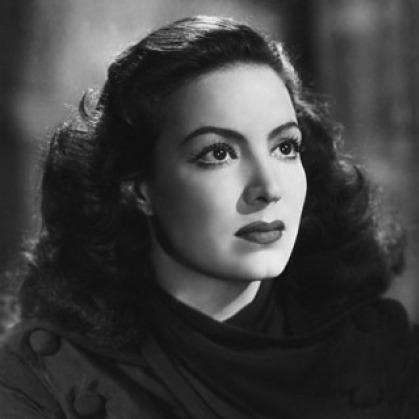

Propaganda
María Félix (Doña Barbara, La Mujer sin Alma, Rio Escondido, La Cucaracha)—Maria Felix is still possibly the most well-known Mexican film actress. She turned down multiple-roles in Hollywood and a contract with Metro-Goldwyn-Meyer in order to take roles in Mexico, France, and Argentine throughout the 1940s, 50s, 60s. She was so famous and so respected as a dramatic actress that she inspired painters, novelists and poets in their own art--she was painted by Diego Rivera, Jose Orozco, Bridget Tichenor. The novelist Carlos Fuentes used her as inspiration for his protagonist in Zona Sagrada. She inspired an entire collection by Hermes. In the late 1960s Cartier made her a custom collection of reptile themed jewels. She considered herself to be powerful challenger of morality and femininity in Mexico & worldwide--she routinely played powerful women in roles with challenging moral choices and free sexuality. But even still, years after he death, she is celebrated with Google Doodles, and appearances in the movie Coco, and holidays for the anniversary of her death.
Maureen O’Hara (The Parent Trap, The Quiet Man)—They called her the Queen of Technicolor. That right there should help introduce people to the fiery, wonderful, stunning Maureen O’Hara. She was from Ireland, born in 1920, and started in theater at the age of ten. At 15, she was winning drama awards, including one for her performance as Portia in the Merchant of Venice. At 16, she was the youngest pupil to graduate from the Guildhall School of Music. By 18, she transitioned to film, starting off with a bang alongside Charles Laughton in Hitchcock’s Jamaica Inn, and proceeded to work steadily up through the early 1970s. She was in adventures and comedies and romances, spent a lot of time in westerns giving merry hell to John Wayne (and less merry hell to the indomitable John Ford — she held her own even when he was verbally abusive and demeaning to her). She was in The Quiet Man, which was the first American-made film entirely filmed in a foreign country. She helped make American Christmas what it is with Miracle on 34th Street. She played a lineup of headstrong, forthright women second only, perhaps, to Katharine Hepburn. She was married three times, lived for a while with a boyfriend in Mexico, sued for custody of her daughter in the 1950s, AND sued a magazine for libel in the same era. After mostly retiring from acting, she edited a magazine. She eventually sold the magazine to spend more time with her grandson, but even then ran a ladies fashion store. She was an outspoken, brilliant, passionate lady, with amazing red hair, a career to envy, and — well — that face!
This is round 2 of the tournament. All other polls in this bracket can be found here. Please reblog with further support of your beloved hot sexy vintage woman.
[additional propaganda submitted under the cut]
María Félix:

She's Thee Hot Vintage Movie Woman of México. She's absolutely gorgeous and always looks like she's about to step on you. you WILL be thankful if she does.
"María Félix is a woman -- such a woman -- with the audacity to defy the ideas machos have constructed of what a woman should be. She's free like the wind, she disperses the clouds, or illuminates them with the lightning flash of her gaze." - Octavio Paz
María Félix is one of the most iconic actresses of the Golden Era of Mexican Cinema. La Doña, as she was lovingly nicknamed, only had one son, and when her first marriage ended in divorce her ex-husband stole her only child, so she vowed that one day she’d be more influential than her ex and she’d get her son back. AND SHE DID! María Félix rejected a Hollywood acting role to start her acting career in Mexico on her own terms with El Peñón de las Ánimas (The Rock of Souls) starring alongside actor, and future third husband, Jorge Negrete. She quickly rose to incredible heights both in Mexico and abroad, later on rejecting a Hollywood starring role (Duel in the Sun) as she was already committed to the movie Enamorada at the planned filming time. Of this snubbing she said, quote: “I will never regret saying no to Hollywood, because my career in Europe was focused in [high] quality cinema. [My] india* roles are made in my country, and [my] queen roles are abroad.” (Translator notes: here the “india” role means interpreting a lower-class Mexican woman, usually thought of indigenous/native/mixed descent —which she had interpreted and reinvented throughout her acting career in Mexico— and what abroad was typically considered the Mexican woman stereotype, with the braids, long simple skirts, and sandals. This also references the expectation of her possibly helping Hollywood in perpetuating this stereotype for American audiences that lack the cultural and historical contexts of this type of role which would undermine her own efforts against this type of Mexican stereotypes while working in Europe) She was considered one of the most beautiful women in the world of her time by international magazines like Life, París Match, and Esquire, and was a muse to a vast number of songwriters (including her second husband Agustin Lara,), artists, designers, and writers. Muralist Diego Rivera described her as “a monstrously perfect being. She’s an exemplary being that drives all other human beings to put as much effort as possible to be like her”. Playwriter Jean Cocteau, who worked with her in the Spanish film La Corona Negra (The Black Crown) said the following about her, “María, that woman is so beautiful it hurts”. Haute Couture houses like Dior, Givenchy, Yves Saint Laurent, Balenciaga, Hérmes, among others, designed and dressed her throughout her life. She died on her birthday, April 8, 2002, at 88 years old, in Mexico City. She was celebrated by a parade from her home to the Fine Arts Palace in the the city’s Historic Downtown, where a multitude of people paid tribute to her. Her filmography includes 47 movies from 1942 until 1970, and only two television acting roles in 1970. She has 2 music albums, one recorded with her second husband, Agustín Lara, in 1964 titled La Voz de María y la inspiración de Agustín «The voice of María and the inspiration of Augustín», and her solo album Enamorada «In Love» in 1998. Her bespoke Cartier jewelry is exhibited alongside Elizabeth Taylor’s, Grace Kelly’s and Gloria Swanson’s. In 2018, Film Director Martin Scorsese presented a restored and remastered version of her film Enamorada in the Cannes Classics section of the Cannes Festival and Google dedicated a doodle for her 104th birthday. On august 2023 Barbie added her doll to the Tribute Collection.

Maureen O'Hara:
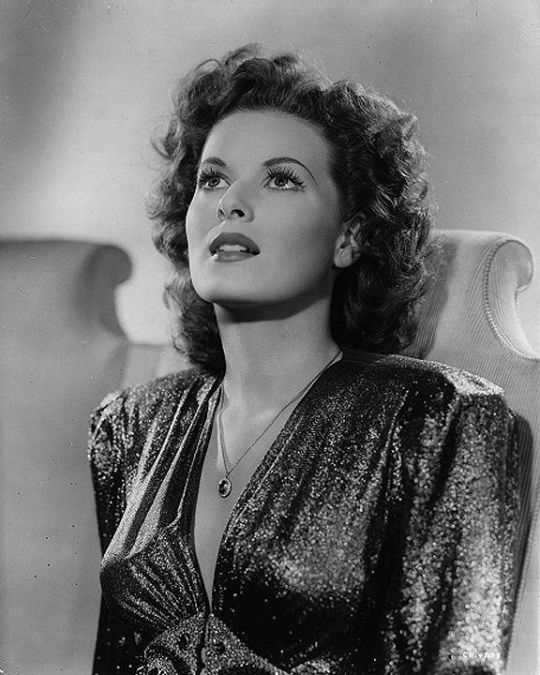
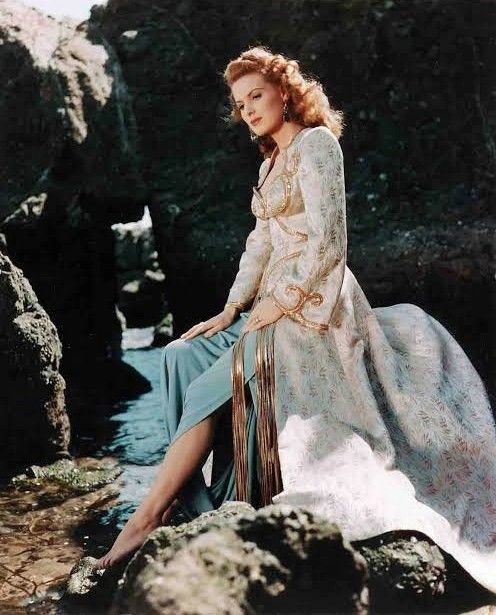
I thought she was one of the most beautiful women in the world when I was a kid and I have yet to really change my mind. Always loved her temper and her red hair. Plus she was kind of a MILF in The Parent Trap

Haughty, red hair, hot.
I would have to give up my passport if I didn't submit Maureen O'Hara but also have you seen her? Not only did she look like that (she was called the Queen of Technicolor, though she wasn't a big fan of that sobriquet), she was also very funny and tough as nails. She faced off against Walt Disney in a contract dispute and the legend goes that when someone mentioned her at his deathbed, he sat up and said 'That bitch!'. Her comment on that story is "At least he didn't think of me and say, 'That wimp'." She struggled to get serious roles for a time, saying ""Hollywood would never allow my talent to triumph over my face," so she plays the sexy princess/pirate/harem girl in a LOT of early movies that she referred to as "Tits and Sand" films, she being the tits in question. She also turned down so many leading men and studio bosses (Errol Flynn and Howard Hughes are among her rejects) that there were rumours spread that she was a lesbian. Many egos were battered it seems. I'm including the infamous Lady Godiva scene in the photo propaganda for the sheer Moment of it [link] . It was a bit of a flop critically, but it was one of Clint Eastwood's first film appearances and she said he told her later that he was very glad of the money at the time.
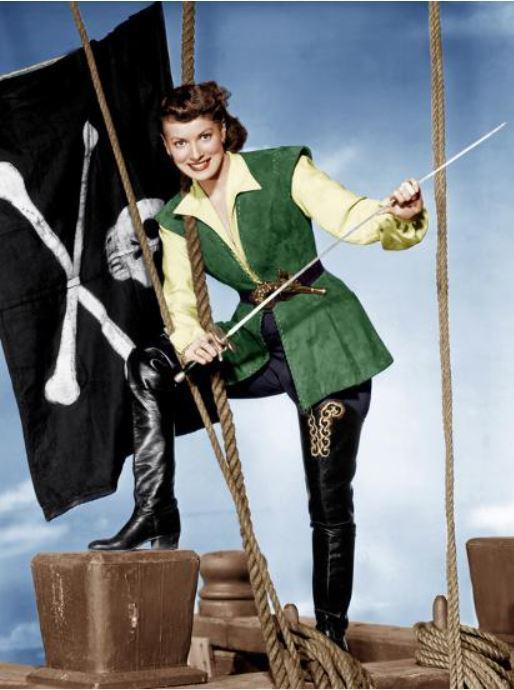

She was a very proud Irish woman and when she went for her American citizenship they insisted on referring to her as British (the timeline of Irish independence is a bit wibbly wobbly, we won't get into it here). She refused to accept American citizenship under that condition and argued her way through every level of US immigration she could find, supposedly saying "I'm not responsible for your antiquated records here in Washington", until a judge finally gave up and said "Give her what she wants, just get her out of here". This made her the first ever person seeking US citizenship to be proclaimed Irish on the record!

The hair. The accent. The figure. The acting chops. The perfection.

174 notes
·
View notes
Note
Was Hitchcock ever supposed to be even slightly more relevant early in the comic? I feel like he got a kind of strange amount of attention around it's start
Umm, not really! The only time he's ever mentioned in the comic is this paragraph in Issue 2, which was really just to establish the family tree for Cypressfoot and Nightberry's family and to bring up Pinewing's insecurity about not knowing his father.

He was on my mind a little bit more in the early parts of the comic as I was developing the story, but he was never supposed to be an important character.
108 notes
·
View notes
Text


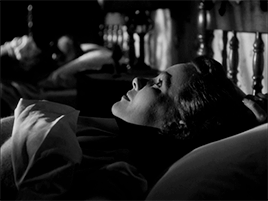

The CAMERA CONTINUES its FORWARD MOVEMENT THRU the window and into the room. It is shabby and ill-kept. Facing us is an iron bedstead and on it lies a man. CAMERA MOVES toward him until he is in SEMI-CLOSEUP. This is UNCLE CHARLIE. He is fully dressed, meticulously neat, and the bed is not even ruffled. His hands are clasped behind his head. He unclasps them and reaches for a cigarette. The package lies on the bed-clothes beside him. His hand is well-kept, steady and strong. He is in his early forties and has the eyes of a child. His mouth, though, is set with fatigue. He lights a cigarette and stares up at the ceiling. CAMERA MOVES TOWARD the bed. On it lies a figure -- in the same position that we found Uncle Charlie -- hands behind head, gazing up at the ceiling. YOUNG CHARLIE is between the ages of 18 and 20. Very pretty, capable of high spirits, but with a strong sense of responsibility. Her present mood is without self-pity or tearful exaggeration, When we have her in SEMI CLOSEUP, we HEAR the SOUND of a telephone ringing. She turns her head slightly toward the half-open door.
SHADOW OF A DOUBT (1943) dir. Alfred Hitchcock
#Shadow of a Doubt#Shadow of a Doubt 1943#Joseph Cotten#Teresa Wright#Alfred Hitchcock#Hitchcock#Charlie Newton#Charlie Oakley#shadowofadoubtedit#noiredit#oldhollywoodedit#classiccinemaedit#ritahayworrth#filmnoiredit#hitchcockedit#classicfilmblr#classicfilmedit#filmgifs#moviegifs#movieedit#filmedit#classicfilmsource#josephcottenedit#teresawrightedit#pureanonedits#they're SO#SOULMATES#1940s
200 notes
·
View notes